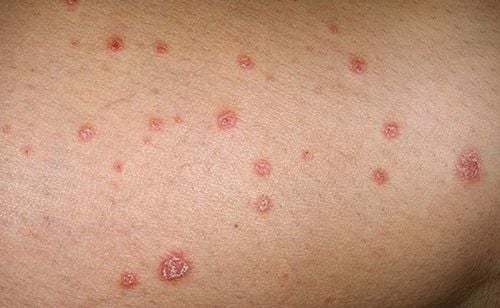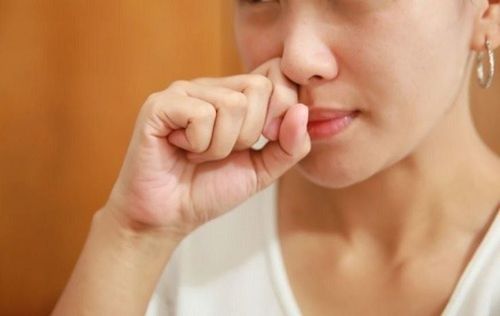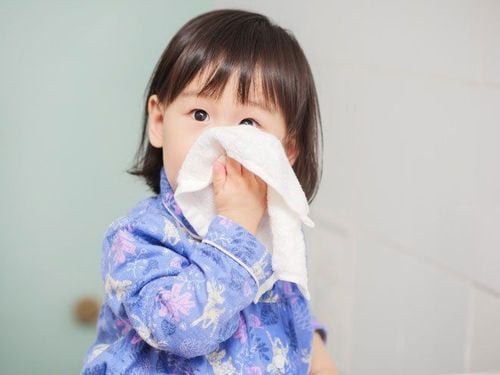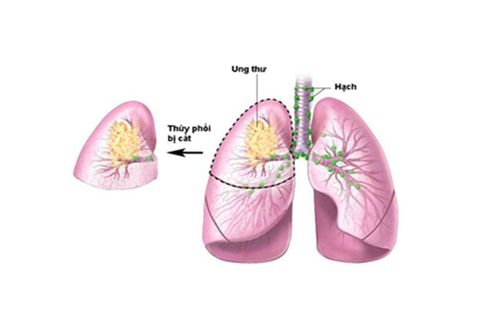This is an automatically translated article.
The article is professionally consulted by Master, Doctor Nguyen Huy Nhat - Department of Medical Examination & Internal Medicine - Vinmec International General Hospital Da Nang.Allergic rhinitis is a very common disease that recurs every time the weather changes, causing discomfort for children. Although this disease is not too dangerous, if not treated properly, it can lead to complications affecting the health and development of children.
1. Learn about allergic rhinitis
Cold weather, polluted environment and air, low resistance, so allergic rhinitis often occurs in children with manifestations such as itchy nose, sneezing, runny nose, and crying at night. .Allergic rhinitis is a common disease in children, although not life-threatening, it makes children feel uncomfortable. Moreover, if not properly and definitively treated, the disease can cause many complications for children such as ear infections, pharyngitis, sinusitis, bronchitis,...
Allergic rhinitis in children is a condition in which the mucous membranes (the membrane lining the inside of the nose) become inflamed due to allergies to internal and external agents. When exposed to allergens, the body releases histamine, which causes itching, swelling, and fluid buildup on the inside of the nose.
Allergic rhinitis can occur seasonally or year round. In areas with a cold climate like Northern Vietnam, most diseases are common in spring and winter when pollen is dispersed a lot and the air is too humid, making it easy for mold to grow.
2. Causes of Allergic Rhinitis
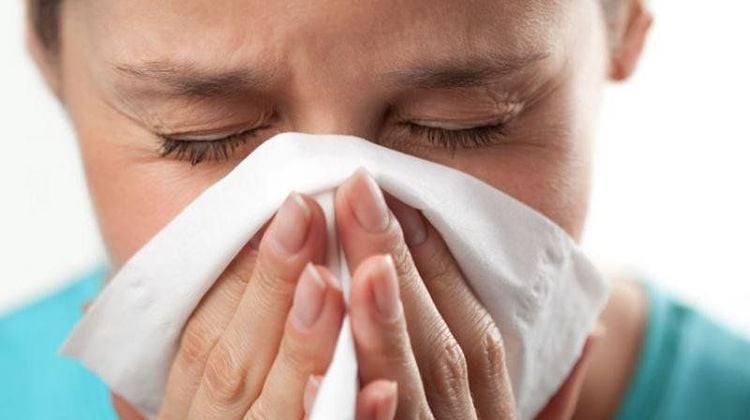
The main cause of allergic rhinitis is the body's response to foreign objects such as dust, pollen, dog and cat hair, fungal spores and when the weather changes. These agents often act as an incomplete antigen, when met with the corresponding antibody (in the body), a reaction will occur.
Usually allergic rhinitis often appears in children with atopic allergies. Therefore, with the same irritant, some children have allergic rhinitis, but some children do not. This disease is common in spring and winter, when pollen is spread a lot in the air, the air is too humid to create conditions for mold growth.
3. Care and treatment
When children have allergic rhinitis due to sudden weather changes, they should be taken to an ENT specialist for reasonable treatment measures.Find out the causes of allergies for children, to limit children's exposure to allergens. Such as not planting flowers near the house, not allowing dogs and cats to enter the house, not letting children in an environment with smoke, limiting letting children go to dusty, drafty, humid places...
Goals of treating allergic rhinitis The response is to reduce symptoms to a minimum and select drugs that are both effective and have few toxic side effects. There are many groups of drugs for the treatment of nasal diseases, which are divided into 2 categories: oral drugs and topical drugs (inhaled or sprayed into the nose).
3.1.Oral group of oral antihistamines, such as chlorpheniramine, loratadine, cetirizine, help relieve symptoms of nasal itching, sneezing, runny nose, and watery eyes, but have no effect on nasal congestion. Oral antibiotics are used when the disease of the nose is related to an infection, it is necessary to be prescribed by a doctor, not to buy and use it or listen to the advice of a non-specialist. The group of oral sympathomimetic drugs that cause vasoconstriction for adults only, such as ephedrine, pseudoephedrine, and phenylephrine, have a very good decongestant and nasal congestion effect. The oral glucocorticoid group, such as prednisone, prednisolone, and dexamethasone, is only used in severe and chronic sinusitis. These drugs must also be prescribed by a doctor, not arbitrarily used indiscriminately. 3.2.Group of drugs for topical use Vasoconstrictor nasal drops containing pharmaceutical substances such as naphazolin, oxymetazolin ... have a very good decongestant effect, but should only be small for 7 days for adults. For children, this type of nasal drops should not be used because it can cause dizziness and cyanosis. Children should only use nasal drops or spray NaCl 0.9% to help clear and clean the nose.
Nasal glucocorticoid drugs such as flixonase, nasacort, becotide are effective in the treatment of allergic rhinitis, and can be used long-term to prevent this disease.
Please emphasize, the nasal drops that children, infants, pregnant women or adults need frequently to help ventilation should be 0.9% sodium chloride solution (NaCl 0.9%), or Also called "physiological saline" solution.

4. Prevention of allergic rhinitis
Use physiological saline or sea water spray to wash the nose for children every day, especially when coming home from the street. Apply a moisturizing cream to the skin under the nose to avoid scratching the baby's skin from wiping the nose. Run a humidifier in the standard and cool air to create a fresh environment for children. If the family does not have a humidifier, parents can apply the following method: Before sleeping, use a warm towel to wipe the sides of the baby's nose. Warmth can temporarily relieve a blocked nose, making your child more comfortable. Around the house should limit planting flowers. Do not keep dogs and cats in the house, limit to the maximum extent that children do not come into contact with pets. Periodically clean blankets, sheets, pillows, cushions, carpets, curtains, upholstery fabrics, cushion covers. Housing needs to be cool, clean, and avoid moisture to limit mold growth. It is necessary to clean the teeth of children every day, especially after eating, before and after waking up. Avoid exposing children to smoke, limit exposure to dust. Bathe your baby properly and use warm water to bathe. For children under 3 months, when the child shows signs of runny nose and rhinitis, parents need to take the child to the hospital for timely examination and treatment; Because at this stage the signs of rhinitis and flu are similar, it cannot be diagnosed with the naked eye. Children should be taken to the doctor early to limit the risk of dangerous bronchitis and pneumonia for children. During the change of seasons, the weather changes from hot to cold, it is necessary to keep the child's body warm, especially the neck, nose and feet area. Give your child plenty of water to drink to help the respiratory system work better. Encourage children to eat more green vegetables and fresh fruits to supplement vitamins for children, if necessary, vitamin C supplements can be given to help children strengthen their resistance. As soon as the child shows symptoms of allergic rhinitis, parents should take the child to the doctor immediately so that the correct diagnosis and appropriate treatment can be made to avoid progression to other respiratory diseases. The air environment is becoming increasingly polluted with many pathogens. Therefore, prevention is better than cure, parents should take care of their children every day to help them have a good resistance and stay away from pathogens.Doctor Nguyen Huy Nhat has many years of experience in the field of respiratory disease treatment at Hue Central Hospital, Hoan My General Hospital, .. before being a doctor of General Internal Medicine Department of General Hospital. Vinmec Danang International.
If you notice any unusual health problems, you should visit and consult with a specialist.
Please dial HOTLINE for more information or register for an appointment HERE. Download MyVinmec app to make appointments faster and to manage your bookings easily.





